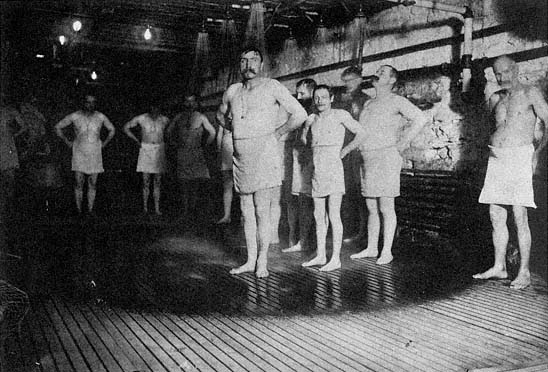Enforcement of Moral Codes
At the simplest level, reformers sought to control what they perceived as aberrant social lives by controlling the behavior itself. Beginning in the nineteenth century, various San Francisco reform committees fought for city controls against the sins of downtown life; they did this as a part of their mission hall programs, temperance promotion, and dance hall crusades. In 1903, the city's Board of Supervisors passed a set of mild restrictions against dancing, gambling, sexual solicitation, and cross-dressing. The city's gambling and whorehouse activities continued unabated.[12] In 1913, the state passed the Red Light Abatement Act, allowing authorities to close prostitution houses for up to a year. The Northern California Hotel Association joined the coalition that lobbied against the law, fearing that enforcement could too easily be brought against hotel owners. American entry into World War I stimulated a high wave of concern about vice districts. The ever-active Simon Lubin—with an eye to hotel connections with prostitution and as a member of a Sacramento welfare commission—railed against police corruption that kept "unregulated hotels and lodging houses spreading venereal diseases among the soldiers" at the local army camp.[13] Not all sexual alarms about hotels focused on prostitution or troop safety. Some social agencies recommended that hotel managers bar boys under the age of seventeen from cheap lodging houses, or at least prevent boys and men from rooming together, because of the dangers of homosexuality. For similar reasons, reformers elsewhere urged police to keep city boys from loitering or playing in streets and parks near the cheap lodging house districts.[14]
In 1919, federal Prohibition eliminated drinking in hotel bars and dining rooms and thereby slashed the most lucrative profits of hotel operation. The California Anti-Saloon League and the local WCTU, however, could do little to enforce Prohibition in San Francisco. As in the hotels of other cities, Prohibition merely moved drinking from the management-supervised areas of San Francisco hotels to private rooms, with dire consequences for furniture maintenance and cleaning bills.[15]
Parlor reform—the campaign to require sitting rooms in tenements and rooming houses and thereby to encourage quiet home life—was a milder moral reform that also affected hotels. In 1927, the Girls Hous-

Figure 8.4
Creating social reform by changing individual behavior. Men taking a compulsory shower in a
New York City public lodging house, ca. 1900.
ing Council of San Francisco decried the long absence of rooming house parlors. Blocked from their goal of laws requiring sitting rooms, the matrons of San Francisco (like women's groups elsewhere) compiled a private registry of rooms. Volunteers inspected each address in the San Francisco registry and judged its respectability, cleanliness, and comfort. The resulting list was designed to prevent single girls from getting into morally dangerous situations when they followed up newspaper ads for a room. Some YMCAs offered similar services for men.[16] This regulation of behavior by private inspection was another means of changing or enforcing individual action.
For hoboes and other poorly dressed people, control of behavior was more direct and often rougher. When police caught drunks or panhandlers out of bounds in San Francisco, they were summarily sent back to the parts of the city "where they belonged" and roughed up if they did not go kindly. The showers required at least once a week in some municipal lodging houses were yet another means of inducing new behavior as well as hygiene (fig. 8.4).[17]
Control over hotel life simply by control of behavior proved ineffective. Prohibition's financial effects on hotels were unintended side effects and hurt the better hotels more than the cheap rooming houses. Laws regulating drinking, dancing, and other social life required constant enforcement that was impossible to provide. In contrast, regulating the environmental conditions of cheap hotels offered an approach that was literally more concrete and, to most observers, far more effective.